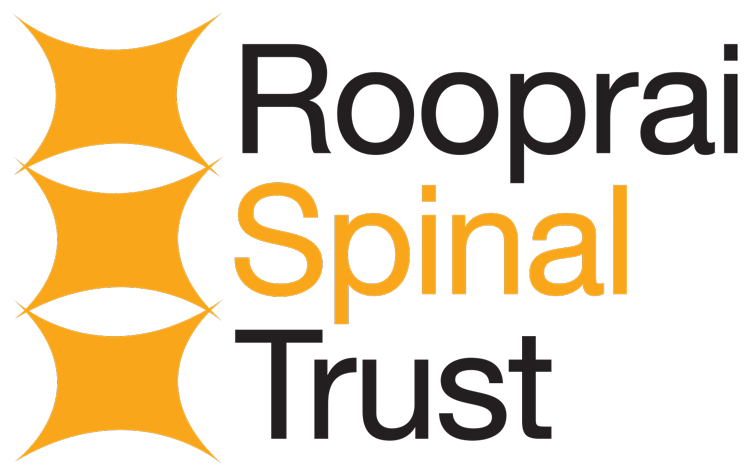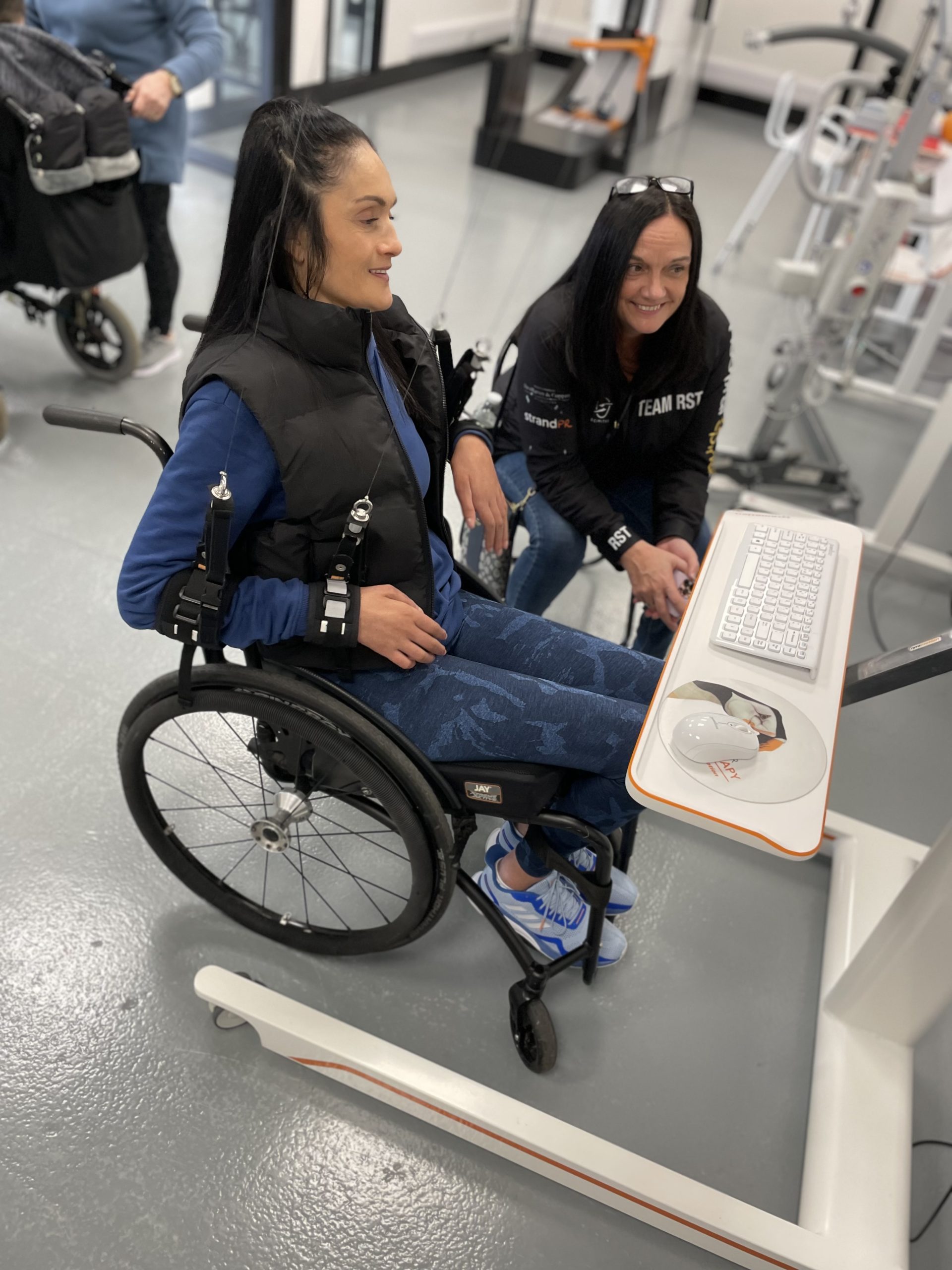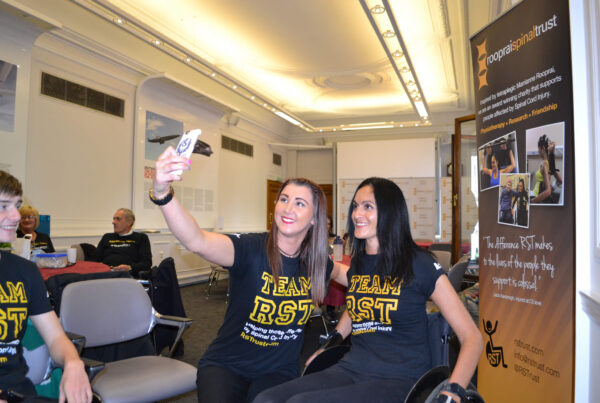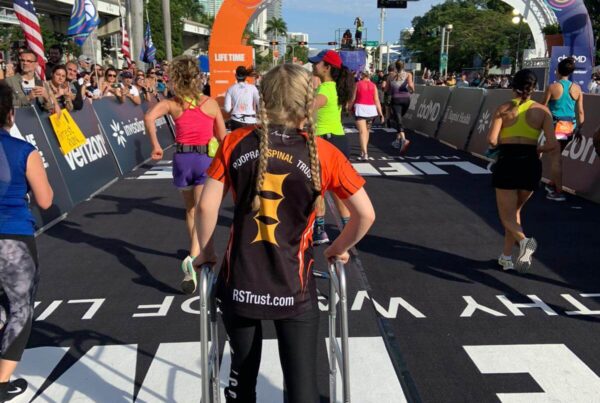Associate Solicitor Lee Martyniak from Serious Injury Law has 25 years’ experience working in law and personal injury claims. Recently he met Andy and Marrianne to find out more about the benefits of physio after a serious accident.
As a serious injury lawyer, I have clients who have unfortunately experienced serious spinal cord injuries. Some may have been quite active prior to their injury, others perhaps not so.
Once their rehabilitation is under way, my clients are often keen to return to some form of exercise if possible.
Rehabilitation very much depends on the individual and their personal needs, but what is certain is that some form of physical exercise will continue to benefit the health of a person with a spinal cord injury. Exercise can improve a person’s health and wellbeing in several important ways:
- It helps to maintain a healthy body weight
- It often improves mental health and provides stress relief as a result of the endorphins released
- An improvement in sleep
- It is beneficial for everyday function
- An improvement in energy levels
- An improvement in muscle and bone strength
- An improvement in circulation and respiratory function
- It encourages independence, confidence and self esteem
Any type of exercise will be beneficial; it doesn’t have to be full on and can just be 20 to 30 minutes of gentle exercise three times per week.
I recently met Andy Uttridge of the Rooprai Spinal Trust at a charity golf day. He told me about how the organisation was set up in 2005 following his wife Marrianne’s spinal injury. She suffered a fractured vertebrae at the top of her spine (C2) and crushed C3 and C4. As a result, she was left paralysed from her shoulders down.
I took an active interest in Rooprai Spinal Trust at this point and I began watching videos which Andy would post showing the incredible work Marrianne has been able to do in the gym, in spite of her injuries.
I asked Marrianne how this started. Was it a recent thing or had she always been this active since her injury?
I started physio as soon as I was stable in the spinal unit and I have been committed to it ever since.
In the unit, access to physiotherapy was very limited, so I would improvise a lot with loved ones helping me passively while on bed rest. I was chomping at the bit to leave the unit and explore what was out there to help me progress.
This was 20 years ago, so the options to begin with were few. I visited France a lot and the US too and I have no doubt that the early intervention of physiotherapy helped me maximise any recovery potential I had. Today I’m still a high-level tetraplegic of course, but the function I have gained has changed my life. Function I was told I’d never have.
These days there are lots more options in the UK for those with SCI when it comes to physiotherapy and technology. I also think it’s well documented that the sooner you can access it the better. Funding is of course the issue for many. This is where the Rooprai Spinal Trust is trying to make a difference and working together with the Fletchers Foundation and the Frenkel Topping Foundation to joint fund a number of individuals is making such a difference.
What different types of exercise does you do?
Looking after your body is something I don’t take for granted, particularly as I get older. Avoiding secondary issues is so important, but also, I like to feel fit and healthy. Having a high-level SCI doesn’t change that.
I do a lot of weight-bearing exercises (great for bone density), high kneeling and standing. I do a lot of dynamic standing – so rather than just standing in a frame, I’ll stand in leg braces to work my core and I’ll throw in some upper body exercises too. Those who have followed my journey know how much my core has improved over the last few years but it’s taken a lot of hard work and patience.
I often use functional electrical stimulation (FES). Looking after those paralysed muscles is important and FES is great for this; I can row with it, cycle, do squats – so many things to maintain muscle tone.
Stretching is crucial for me as being stiff and full of spasms can really restrict any function and make life hard. Getting out of the chair to stretch is something I love to do. It can really make a difference, particularly with sleeping comfortably.
How often is beneficial?
Monday to Friday I do something every day. Sometimes with my care team, sometimes with a trainer or physio. Some days are more intense than others, but I will always do something five days a week.
I’ve picked up a lot of ideas over the years and I know what I need to do to look after myself.
Balance is the key for me though. When I’m not training I enjoy my life. Whether it’s having a few drinks with friends, going out to dinner, playing with my young nieces or just relaxing and watching a film.
If you’re new to exercise, start slow and build it up. It’s never too late to start. You might surprise yourself with what you can achieve.
How do you find the right balance?
It’s part of my life. Looking after my body through exercise and diet is something I’m passionate about. Don’t get me wrong I’m not obsessed, I love a good night out (as a lot of the Fletchers/Serious Injury Law team know!) but everything in moderation.
Trying new things in physio, reaching goals, gives me such a high. If there’s an exercise I need help with, I will keep working and working until I can do it myself. The satisfaction that brings is indescribable.
Like most people, I like to look in the mirror and think I’m looking good. With my level of injury I’m reliant on help for every aspect of my life but sometimes in the gym I’m independent, even if it’s just for 10 reps!
I was intrigued to get a physiotherapist’s view on the benefits of exercise for spinal cord injuries and Chris Wynne from The Rehab Physio on the Wirral, gave me his thoughts.
Exercise after a spinal cord injury offers numerous benefits, including improved cardiovascular health, enhanced muscle strength and better circulation, which can reduce the risk of complications such as pressure sores and blood clots.
It also aids in maintaining joint flexibility, preventing muscle atrophy, and improving overall mobility and independence. Regular physical activity can boost mental health by reducing stress, anxiety and depression, while promoting a sense of well-being and self-efficacy.
We have seen Marrianne and the RST advocate for this in a significant way. Our collaboration with the RST has spanned three years, during which they have funded numerous individuals to receive physiotherapy and benefit from access to exercise.
A key aspect of this effort is Marrianne’s sharing of her own experiences online, as well as her in-person visits to our clinic. They place a large emphasis on mental health and well-being, which is often overlooked by mainstream services.
It’s clear to me that Marrianne is really feeling the benefits of an active lifestyle and she really is an inspiration to others. With the amazing teamwork of Rooprai Spinal Trust, Fletchers Foundation and The Rehab Physio, there are now some great options available for people with spinal cord injuries to reach their maximum potential.
At Serious Injury Law/Fletchers Group, we are experts at dealing with complex spinal injury claims. We obtain the best rehabilitation for our clients and put them at the centre of everything we do. If you would like more information on how we can help, please contact leemartyniak@seriousinjurylaw.co.uk





